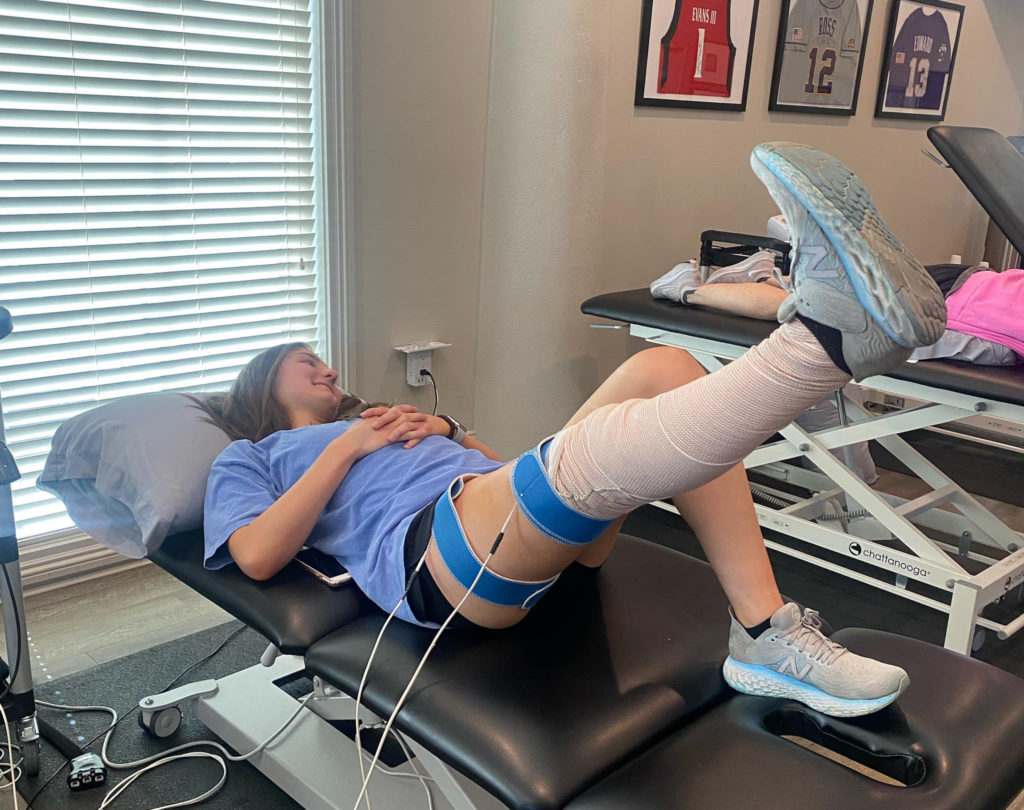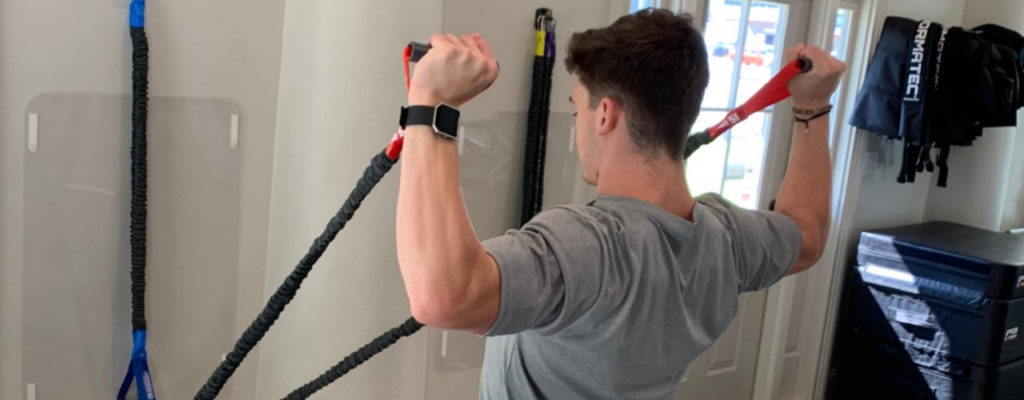An injured or torn ACL is a common occurrence for many athletes of all ages. The ACL, or anterior cruciate ligament, connects your femur (thigh bone) to your tibia (shinbone). This strong band of tissue is located at the center of the knee and provides support to stabilize joint, preventing the tibia from sliding forward.
Due to the positioning of the ACL (from the back of the femur to the front of the tibia) excessive stress caused by twisting, changes in direction, and applied external force can cause knee injuries like sprains and tears of the ligament. When these injuries occur, the ACL can be reconstructed by an orthopedist and rehabilitated by a physical therapist.
What Can Cause an ACL Injury?
There are several movements and actions that can damage the anterior cruciate ligament. Many of the common causes of an ACL injury occur during athletic activities. Sudden acceleration or stopping, along with changing direction can cause ACL damage. Landing awkwardly from a jump, pivoting with a firmly planted foot, and experiencing a blow or collision to the knee can also result in an ACL injury.
How is ACL Damage Repaired?
If an ACL injury is significant enough that it causes a tear, surgery is the best option as the ligament will not heal itself. For younger patients and athletes, surgery is highly recommended. ACL reconstruction typically involves a tendon graft that remodels the ligament. There are two types of grafts that can be performed:
- Autograft – An autograft reconstruction uses a portion of your own tendon to replace the damaged portion of the ACL. Hamstring, quadricep, and patella tendons are most commonly used to remodel the injured ligament. It is important to consider the healing time of the muscle and tendon being used, neuromuscular control, strength, and the potential for a reduced range of motion of the grafted muscle. However, post-surgery rehabilitation with a physical therapist can address these concerns.
- Allograft – An allograft reconstruction uses a donor tendon from a cadaver. Because no other tendon is being taken from your body, no other muscle groups will be affected. Although, there is an increased risk of infection. Your orthopedist can help you make the best decision for treating your injury.
What are the Objectives of Late Phase ACL Rehabilitation?
ACL rehabilitation begins immediately after surgery and is strategically performed in three stages. The acute, mid, and late stages each have specific goals to restore the health, stability, and strength of the ACL. The focus during late phase ACL rehabilitation is to prepare the body to return to its normal pre-injury activity and ability.
Late phase ACL rehabilitation is designed to achieve increased strength and power, enhanced cardiorespiratory fitness, improved unilateral symmetry, dynamic balancing, and reintroducing athletic-specific drills and motions, all with the goal of returning to normal, pre-injury action. Your PT will implement specific exercises, tactics, manipulations, and treatments based on your needs.
At Evolve PT we utilize isokinetic testing for both lower extremities to compare peak strength ratios for quadriceps and hamstrings and determine when it is appropriate for a return to running or other physical activity. We then go forward from jogging progressions to running progressions to speed work, jump training and finally aggressive cutting/agility activities.
The experienced staff of PTs at Evolve understand how ACL injuries affect people, specifically athletes, of all ages. Our focus on using the best rehabilitation methods specific to each unique injury means that you can more quickly get back on your feet (and the field, course, or court).


